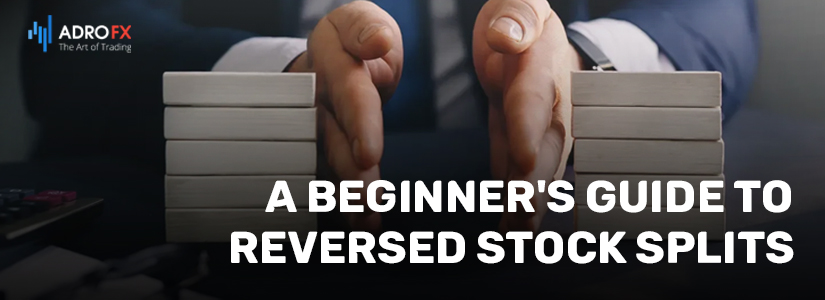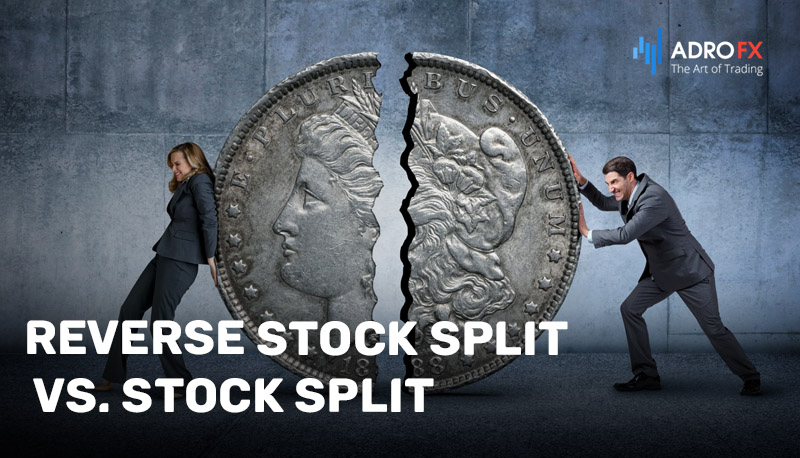A Beginner's Guide to Reversed Stock Splits: What They Are and How They Affect Investors

The world of finance is replete with various corporate actions and strategies that can leave investors perplexed. Among these is the concept of a reverse stock split, a maneuver that often raises questions about its purpose and implications. In this article, we aim to demystify the intricacies of reverse stock splits, shedding light on what they entail, why companies undertake them, and how they affect individual investors. By the end of this exploration, you'll have a clearer understanding of the dynamics at play when a company decides to reverse its stock splits.
Understanding Reverse Stock Split
Reverse stock splits involve a process where companies consolidate their shares, usually with the goal of boosting the share price. This consolidation transforms each existing share into a fractional share, effectively increasing the share's price by the reverse split ratio.
For instance, consider a scenario where a stock is originally priced at $1 per share, and an investor holds 500 shares. Following a 1:10 (one for ten) reverse split, the stock's trading price rises to $10 per share, and the investor's shareholding is adjusted to 50 shares.
It's important to note that reverse stock splits and regular stock splits do not affect the intrinsic value of the company; they only impact the share price. The company's market capitalization remains unchanged by these actions.
Companies often employ reverse stock splits for various reasons. One primary motive is to increase trading volume by attracting more investors with a higher share price. Another motive is to maintain their listing on a stock exchange and adhere to the exchange's share price requirements. Stock exchanges like the New York Stock Exchange (NYSE) and Nasdaq have specific listing standards that include maintaining share price and trading volume above certain thresholds.
An example of a recent reverse split is General Electric's (GE) 1:8 reverse split in 2021. Shareholders approved this reverse split in May to bring GE's share price and the number of outstanding shares in line with those of its competitors after divesting several subsidiaries.
Before the reverse split on August 2, 2021, GE's stock was trading in the low teens. On the day of the split, it was trading at around $104 per share. In the subsequent six months, it saw fluctuations, dropping as low as $92 per share. This highlights a potential risk associated with reverse stock splits: investors can experience fluctuations in prices after the split, potentially leading to losses.
Reverse stock splits are typically announced well in advance, allowing shareholders and the market to prepare for the upcoming changes.
How a Reverse Stock Split Functions
Reverse stock splits aren't subject to regulation by the U.S. Securities and Exchange Commission (SEC) like other corporate actions. Typically, the decision to initiate a reverse split must gain approval from either the company's board of directors or its shareholders, depending on the company's bylaws and the applicable state corporate law.
Public companies that file with the SEC can notify shareholders about an impending reverse stock split through a proxy statement submitted on forms 8-K, 10-Q, or 10-K. If shareholder approval is required, a proxy statement via Schedule 14A may be necessary. If the company is going private as a result of the reverse split, they would need to file a proxy statement on Schedule 13E-3.
On the day of the reverse split, each existing share is transformed into a fractional share. To illustrate, when General Electric executed its reverse split, every share was converted into one-eighth of a share. In simpler terms, investors received one share for every eight shares they previously held, while the total value of their investment remained unchanged.
However, investors who don't own a number of shares that is evenly divisible by the reverse split ratio will either end up with fractional shares, or the company will compensate them in cash for these fractions. The exception to fractional shares comes into play when a company employs a reverse split as a means to go private. To deregister from the SEC, companies must have fewer than 300 shareholders. Employing a reverse split to eliminate marginal shareholders can help achieve this threshold.
For instance, if a majority of shareholders own fewer than 1,000 shares, the company can execute a 1:1,000 reverse split to eliminate those with smaller holdings by buying them out. These shareholders would then have the option to accept the offer price or purchase more shares to reach the 1,000-share threshold.
In cases where the company sets an offer price for small shareholders that exceeds the current market price (to incentivize them to sell their stock), an arbitrage opportunity may arise. Using the example mentioned earlier, investors could buy 999 shares at the current market price and potentially profit when the reverse split forces them to sell. 
Reverse Stock Split vs. Stock Split
In contrast to a reverse stock split, a regular stock split involves a company with a high share price increasing the number of outstanding shares to reduce the stock's price. This is typically done to keep the stock price within an affordable range for individual investors.
An example of a recent stock split is Intuitive (ISRG), which underwent a 3:1 split on October 5, 2021. In this instance, investors received three shares for every one share they initially held.
It's important to note that both stock splits and reverse stock splits are often executed to enhance investor interest and trading volume in the stock. The distinction lies in whether the stock price is deemed too low (requiring a regular split) or too high (necessitating a reverse split). In both scenarios, the investor retains their holdings, but with a different number of shares.
What It Means for Individual Investors
For individual investors, the impact of a reverse stock split can be significant, depending on their existing holdings and the company's motivations behind the split. When a reverse split occurs, the most apparent change is the reduction in the number of shares owned. This reduction can lead to a perception of increased value per share, which might attract certain investors who are more inclined to consider stocks with higher share prices.
However, it's crucial to recognize that while the number of shares decreases, the overall value of the investment remains the same. For example, if you owned 1,000 shares of a stock valued at $1 before a 1:10 reverse split, you would have 100 shares valued at $10 each after the split. The total value of your investment would remain at $1,000. The mechanics of a reverse split essentially represent a cosmetic adjustment to the stock's presentation, primarily aimed at improving the company's image and attracting a different investor demographic.
On the flip side, fractional shares can present a challenge to investors whose holdings are not evenly divisible by the reverse split ratio. These investors may receive cash in lieu of fractional shares, which may not fully reflect the potential future value of those fractions.
In summary, the effect of a reverse stock split on individual investors varies based on the specific circumstances and the reasons behind the company's decision to implement the split. While the adjustment may seem superficial, it can influence investor perceptions and, ultimately, the stock's appeal to different market participants.
Conclusion
In the realm of investing, reverse stock splits stand as a unique corporate maneuver that can significantly alter a stock's presentation without fundamentally changing the company's value. While it may appear as a mere adjustment to share prices, reverse stock splits serve diverse purposes, from meeting exchange listing requirements to attracting new investor demographics. For individual investors, the impact of such a split varies, with some seeing it as a potential signal of enhanced value, while others may grapple with fractional shares and the complexities they bring. By unraveling the intricacies of reverse stock splits, we hope to equip investors with the knowledge to navigate these events and make informed decisions in the ever-evolving landscape of finance.

About AdroFx
Established in 2018, AdroFx is known for its high technology and its ability to deliver high-quality brokerage services in more than 200 countries around the world. AdroFx makes every effort to keep its customers satisfied and to meet all the trading needs of any trader. With the five types of trading accounts, we have all it takes to fit any traders` needs and styles. The company provides access to 115+ trading instruments, including currencies, metals, stocks, and cryptocurrencies, which make it possible to make the most out of trading on the financial markets. Considering all the above, AdroFx is the perfect variant for anyone who doesn't settle for less than the best.









